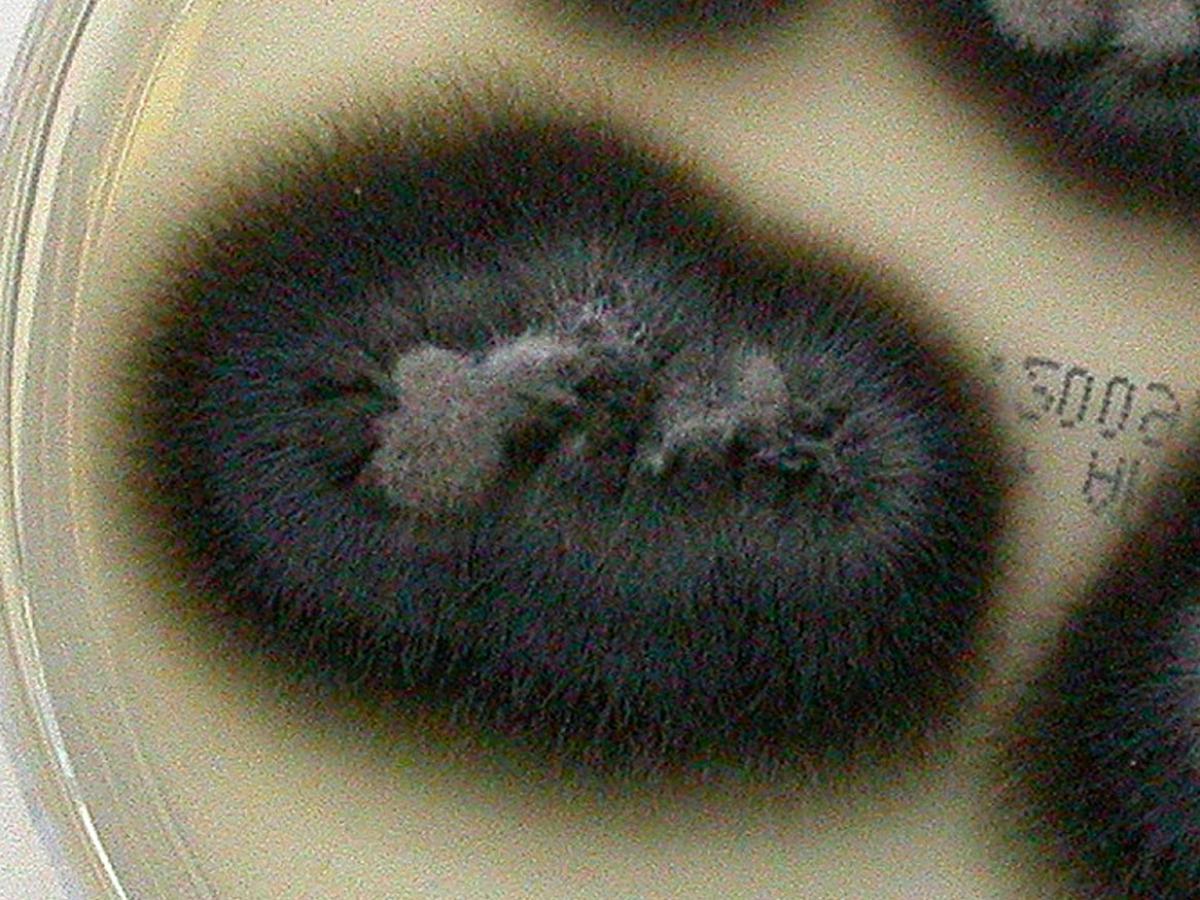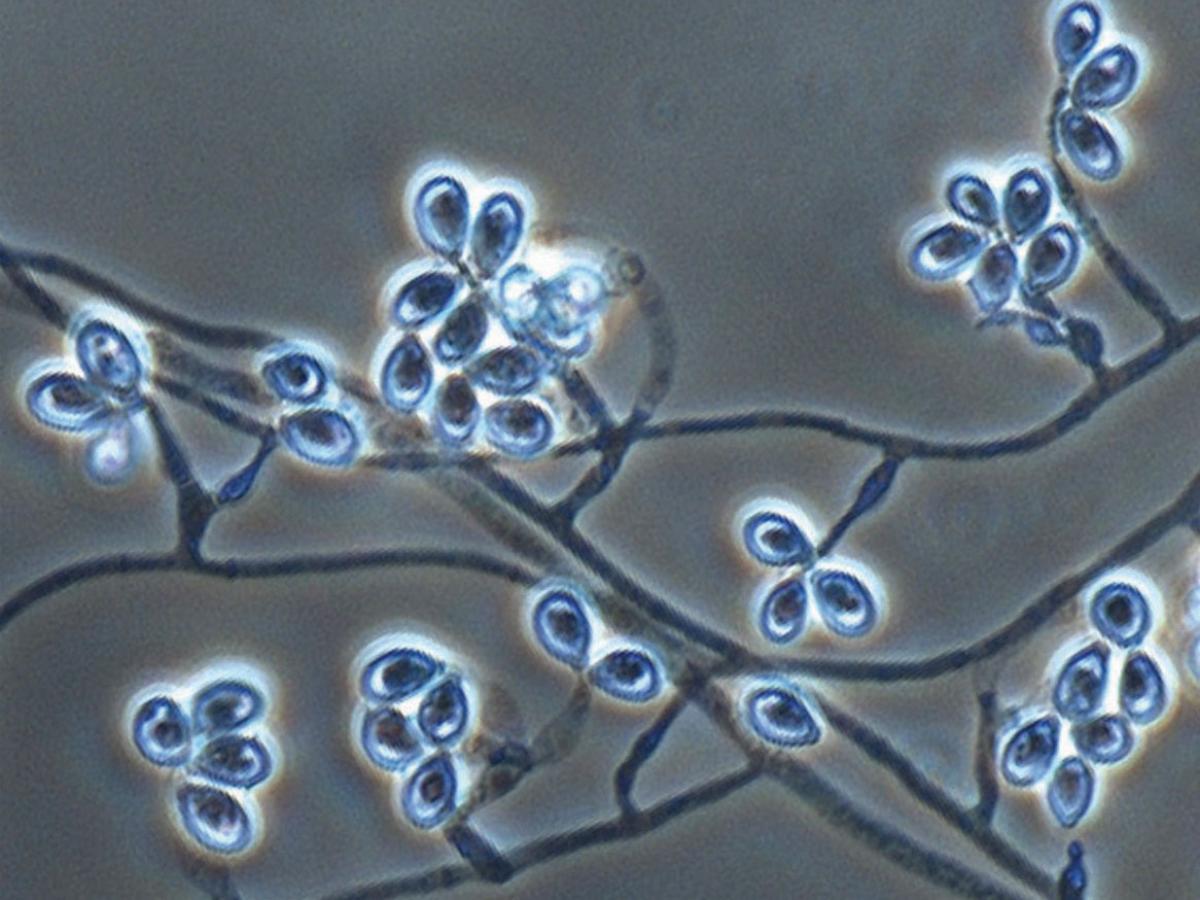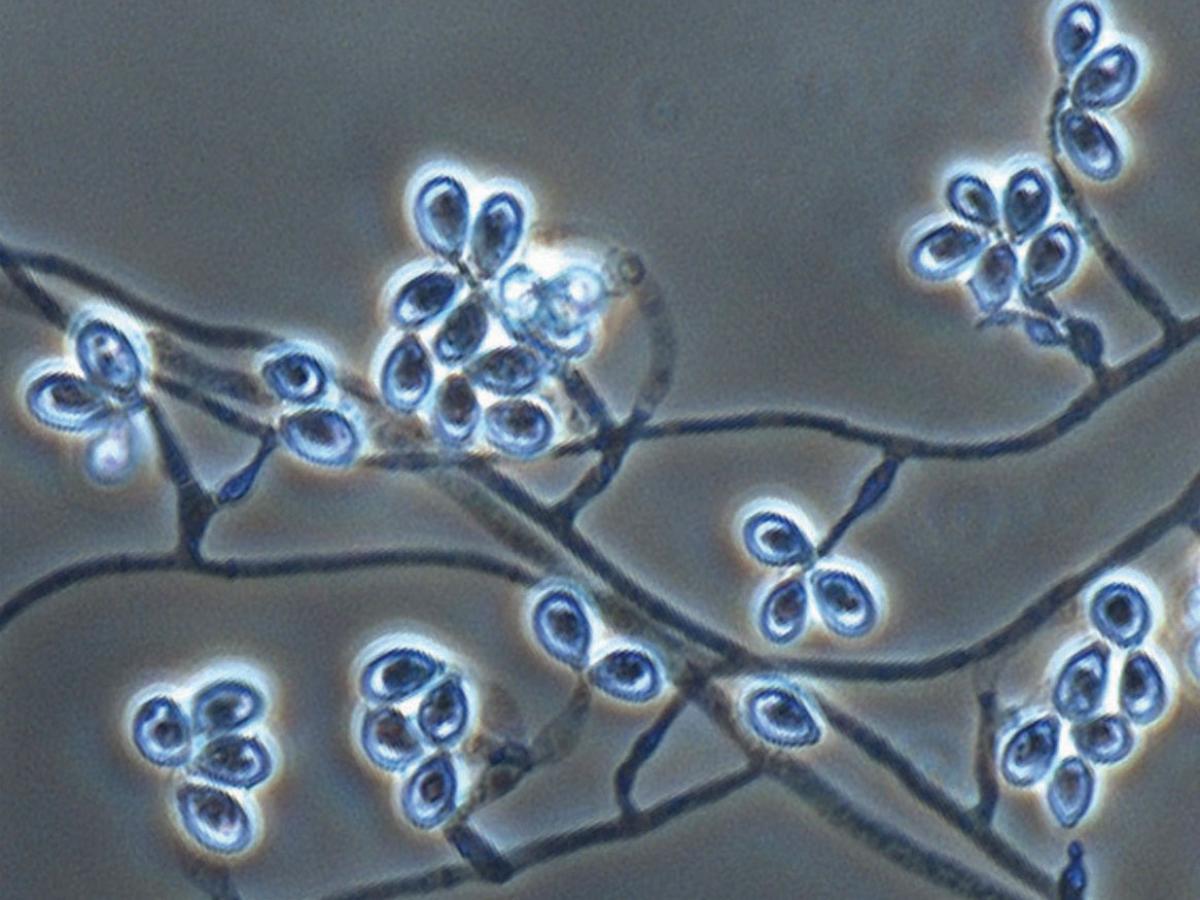Status message
Correct! Excellent, you have really done well. Please find additional information below.
Unknown 3 = Lomentospora prolificans
Clinical presentation: One of the erythematous skin papules on the thighs.
In the Australian Scedosporium Study, to date 5 cases of L. prolificans have been reported from blood cultures and have all been associated with a rash - this may be a useful clinical marker.

Culture: Culture of L. prolificans on Sabouraud's dextrose agar are rapid growing, flat, spreading, olive-grey to black and often have an initial yeast like appearance but soon become suede-like to downy with age.

Microscopy: Microscopic morphology of Lomentospora prolificans. Conidia are borne in small groups on distinctive basally swollen, flask-shaped annellides, which occur singly or in clusters along the vegetative hyphae. Conidia are single-celled, hyaline to pale-brown, ovoid to pyriform and have smooth thin walls. Lomentospora prolificans is distinguished from Scedosporium apiospermum, by having basally swollen (inflated), flask-shaped annellides, slower colony development on nutrient agar media, and by not growing on media containing cycloheximide (actidione).

Comment: Lomentospora prolificans appears to occupy a restricted geographic range, with infections occurring mainly in Australia, Spain, and the United States. L. prolificans infections are refractory to antifungal therapy and are associated with high mortality. Major risk factors include malignancy, cystic fibrosis, and solid organ transplantation. The main clinical presentations are disseminated infection and pulmonary mycoses, followed by bone and joint infections.
About Lomentospora Back to virtual assessment



